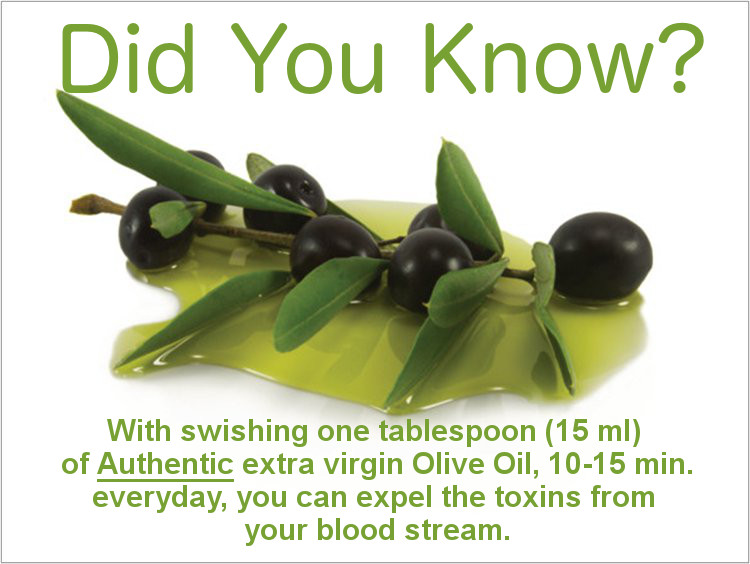Olive Oil Pulling

The practice of olive oil pulling has been gaining popularity in recent years, particularly among those interested in natural health and wellness. This ancient technique, which involves swishing oil in the mouth to promote oral health and detoxification, has its roots in traditional Ayurvedic medicine. But does it really work, and what are the benefits and drawbacks of using olive oil for this purpose?
To understand the concept of oil pulling, it’s essential to delve into its historical context. The practice originated in India over 3,000 years ago, where it was known as “kavala” or “gundusha.” Ayurvedic practitioners believed that the mouth was a gateway to the body, and that by cleansing it with oil, they could remove toxins and promote overall well-being. The traditional oil of choice was sesame oil, which was valued for its medicinal properties and ability to extract toxins from the body.
So, how does olive oil pulling work? The process is relatively simple. Take a tablespoon of high-quality olive oil and swish it around in your mouth for 15-20 minutes, making sure to reach all areas, including your teeth, gums, and tongue. The oil is believed to pull out bacteria, viruses, and other microorganisms from the mouth, which are then spat out, taking the toxins with them. Proponents of the practice claim that it can help reduce bad breath, prevent tooth decay, and even whiten teeth.
However, it’s crucial to examine the scientific evidence supporting these claims. A study published in the Journal of Ayurveda and Integrative Medicine found that oil pulling with sesame oil reduced plaque and gingivitis in patients with chronic plaque-induced gingivitis. Another study published in the Journal of Oral Science found that oil pulling with coconut oil reduced Streptococcus mutans, a bacteria that contributes to tooth decay. While these studies are promising, it’s essential to note that the evidence is largely anecdotal, and more research is needed to fully understand the effects of olive oil pulling on oral health.
One of the primary benefits of olive oil pulling is its potential to reduce inflammation in the mouth. Olive oil contains anti-inflammatory compounds like oleocanthal, which has been shown to have potent anti-inflammatory properties. By reducing inflammation, olive oil pulling may help alleviate symptoms of conditions like gingivitis and periodontitis. Additionally, the antioxidants present in olive oil may help protect against cell damage and promote overall oral health.
Despite the potential benefits, there are also some drawbacks to consider. One of the main concerns is the potential for oil pulling to cause lipoid pneumonia, a condition where oil enters the lungs and causes inflammation. This risk can be mitigated by avoiding gargling or swallowing the oil, and by spitting it out thoroughly after the pulling process. Another concern is the potential for olive oil to interfere with dental work, such as fillings or crowns. It’s essential to consult with a dentist before starting an oil pulling routine, especially if you have any dental work or concerns.
To get the most out of olive oil pulling, it’s essential to choose a high-quality oil that is rich in antioxidants and has a mild flavor. Look for an extra-virgin olive oil that is cold-pressed and has a low acidity level. It’s also crucial to practice good oral hygiene habits, including regular brushing and flossing, to maximize the benefits of oil pulling.
In addition to its oral health benefits, olive oil pulling may also have a positive impact on overall well-being. By reducing stress and promoting relaxation, the practice may help alleviate symptoms of anxiety and depression. The antioxidants present in olive oil may also help protect against cell damage and promote overall health.
What are the benefits of olive oil pulling?
+Olive oil pulling may help reduce bad breath, prevent tooth decay, and even whiten teeth. It may also reduce inflammation in the mouth and promote overall oral health.
Is olive oil pulling safe?
+While olive oil pulling is generally considered safe, there is a risk of lipoid pneumonia if the oil is swallowed or gargled. It's essential to spit out the oil thoroughly after the pulling process and to consult with a dentist before starting an oil pulling routine.
How often should I practice olive oil pulling?
+It's recommended to practice olive oil pulling 2-3 times a week, ideally in the morning before brushing your teeth. Start with a small amount of oil and gradually increase as you become more comfortable with the practice.
In conclusion, olive oil pulling is a natural and potentially beneficial practice for promoting oral health and detoxification. While the evidence is largely anecdotal, the anti-inflammatory and antioxidant properties of olive oil make it a promising candidate for reducing inflammation and promoting overall well-being. As with any health practice, it’s essential to approach olive oil pulling with caution and to consult with a healthcare professional before starting a routine. By combining olive oil pulling with good oral hygiene habits and a healthy lifestyle, you may be able to experience the benefits of this ancient practice for yourself.

